Invasive species can be animals, plants, or living organisms. These are non-native to the ecosystem in New York. When introduced they cause economic or environmental harm.
Invasive species are introduced through shipping, firewood, and accidental release by people. These species introduced to New York can cause the extinction of native animals and plants.
Continue reading below to find out the invasive species in New York.
Table of Contents
Invasive Animals of New York
The invasive animals in New York include:
1. Spotted Lanternfly

The Spotted Lanternfly (Lycorma delicatula) is indigenous to China and has spread invasively in New York. Its host plants include stone fruits and grapes. It was first recorded in the United States in 2014.
The fly measures approximately 25 millimeters in length. They have black heads and gray-brown wings with black spots. The crimson hind wings are visible when resting. The abdomen is yellow with white and black banding.
The spotted lanternfly uses any stationery object to lay eggs while feeding on a variety of plants. The eggs can be moved easily, which is why they can spread to new areas without being noticed. They are believed to have been introduced to New York by getting a ride on an object that was brought into the state.
2. Spotted Wing Drosphila

The Spotted Wing Drosphila (Drosophila suzukii), is a fruit fly, originally from Southeast Asia. It has become a serious pest in America. It infests fruit in the early stages of ripening. This is a fruit crop pest and causes a serious economic threat to soft summer fruits, including blueberries, peaches, apricots, cherries, and grapes.
This small fly only grows to around 3.5 millimeters with a yellow to brown body with dark banding on the abdomen. This species has red eyes. The male has a dark spot at the tip of each wing.
Unlike other fruit flies that only infest fermented or rotting fruits, the spotted wing drosphila attacks ripe or fresh fruit. The female uses fresh fruit to lay eggs under the soft skin. The larvae hatch and grow inside the fruit, destroying the value of the fruits.
It was first introduced to North America in central California in 2008, it has since been distributed throughout the country, including New York.
3. Bighead Carp

The Bighead Carp (Hypophthalmichthys nobilis) is a freshwater fish, native to East Asia and has been introduced to North America. This fish is a filter feeder, feeding on zooplankton, phytoplankton, and detritus.
This carp has a large head and mouth. The eyes are set low on the head. They are silver-gray and can grow to sixty centimeters in length. They inhabit rivers and floodplains and are considered invasive as they out-compete any native species.
They are a destructive invasive species in New York. They were imported to remove excess plankton and improve water quality in sewerage treatment plants and aquaculture facilities.
New York has banned the import or possession of this carp species, except in New York City, where they can be sold legally in the live food market. They must be killed before they are removed from the premises.
4. Silver Carp

The Silver Carp (Hypophthalmichthys molitrix) is another invasive freshwater fish, native to eastern Siberia and China. This fish has been introduced to eighty-eight countries around the world. They were originally imported for use in aquaculture.
This carp can grow to one hundred centimeters in length. They were first introduced in North America in the 1970s and imported to control algae growth in aquaculture and municipal wastewater facilities. They are a highly invasive species.
They can reach high population densities and are known to have an undesirable impact on native species and local environments.
5. Asian Clam

The Asian Clam (Corbicula fluminea) is a freshwater clam, native to eastern Asia. It has become an invasive species throughout North America. They were introduced as larvae in the ballast water of container ships.
These clams have yellow-green shells with grown rings. As soon as they reach maturity they produce eggs. They are self-fertile and can have up to 570 larvae per day. A single clam can produce 68.000 larvae per year.
6. Asian Shore Crab

The Asian Shore Crab (Hemigrapsus sanguineus) is native to East Asia and was introduced to North America, where it is now considered an invasive species. The crab can grow to 50 millimeters in width and have a bulb-like structure at the base of the claw.
These are opportunistic omnivores that prefer other animals rather than algae.
7. Chinese Mitten Crab

The Chinese Mitten Crab (Eriocheir sinensis) is a medium-sized burrowing crab with furry claws. It is native to coastal habitats, rivers, and estuaries in East Asia. It is considered an invasive species in New York. Importing or trading this species is forbidden.
They have dark setae on their claws. They can grow to the size of an adult human’s palm with thick legs. They spend the majority of their time in freshwater, returning to the sea when it is time to breed.
This is an omnivorous crab that feeds on small crustaceans, fish, worms, snails, mussels, and dead organic material.
8. Fishhook Water Flea

The Fishhook Water Flea (Cercopagis pengoi) is a planktonic cladoceran crustacean, native to the brackish waters of the Black Sea and Caspian Sea. It has spread to fresh waterways and is considered an invasive species. It is considered one of the one hundred worst invasive species in the world.
It is a predatory cladoceran and a competitor to planktivorous inverts and small fish. It is a pest for fisheries, clogging nets, and fishing gear. This species grows to three millimeters in body length and around thirteen millimeters with the tail.
They were introduced to the Great Lakes in ship ballast waters. They have been transported throughout the country in live wells, bait water, and recreational fishing ropes. They are successful invaders reproducing sexually and asexually. They have a rapid population growth with eggs sticking to boats and being easily dispersed.
9. Mute Swan

This swan (Cygnus olor) was introduced to North America, which is now home to the largest population outside its native range in Eurosiberia, North Africa. They can grow to one hundred and sixty centimeters in length and are white with an orange beak with a black border. It has a knob on top of the beak.
It is one of the heaviest flying birds. As adults, they are all white with some feathers on the head and neck being orange-brown.
10. Northern Snakehead

The Northern Snakehead (Channa argus) is a snakehead fish, native to China, North and South Korea, and Russia. It is considered invasive in New York and is considered a highly invasive species.
This fish has a long dorsal fin and a small head. They grow to around one hundred centimeters in length. They are pale brown to golden tan with dark patches on the sides and saddles on the back.
They are top-level predators posing threats to the native fish populations. They have been found in Flushing Meadows-Corona Park, New York City. In 2008, an infestation was confirmed in Catlin Creek and Ridgebury Lake in New York. The native fish were captured and the waters were poisoned.
11. Round Goby

The Round Goby (Neogobius melanostomus) is a bottom-dwelling fish, native to Central Eurasia. These soft-bodied fish are small with a black spot on the first dorsal fin. They have large eyes and can grow to 25 centimeters in length.
Juveniles are gray. Once they mature they become gray, black, brown, and olive green. They were accidentally introduced to North America in cargo ships’ ballast waters. They are considered serious ecological and economic pests.
These are aggressive fish and voracious predators of eggs of native fish.
12. Sea Lamprey

The Sea Lamprey (Petromyzon marinus) is sometimes referred to as the vampire fish. They have eel-like bodies with round sucker-like mouths. They have sharp teeth, arranged in circular rows.
They are brown-yellow or olive with black markings. They can grow to 120 centimeters in length and weigh up to 2.3 kilograms. They attack native fish, eliminating the native species with explosive populations.
13. Spiny Waterflea
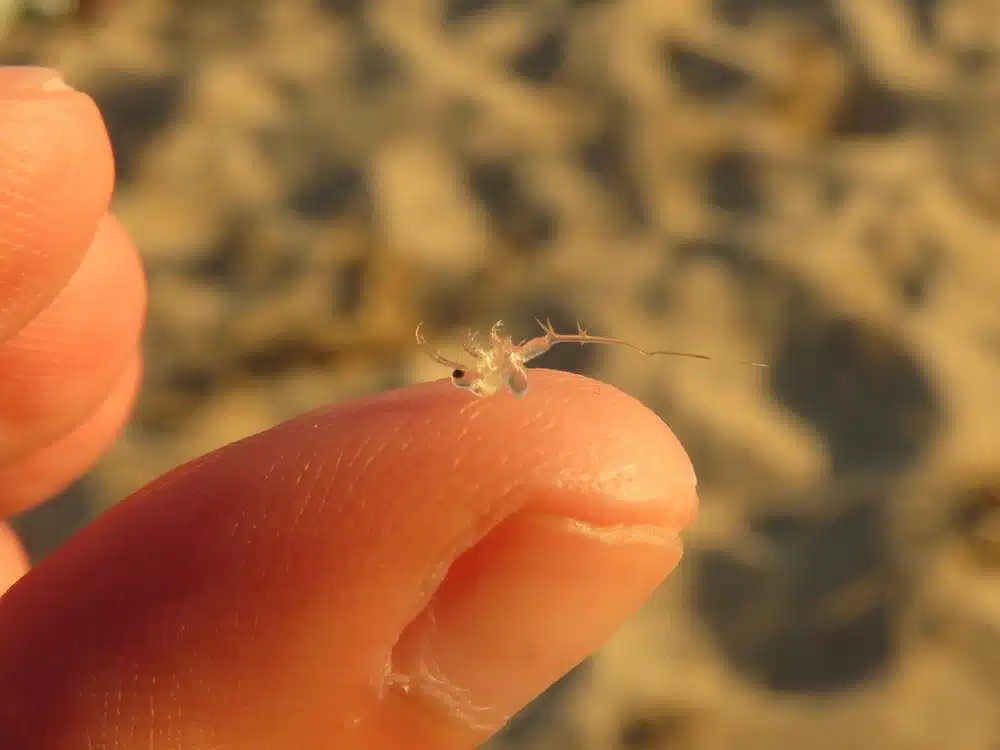
The Spiny Waterflea (Bythotrephes longimanus) is a planktonic crustacean and grows to 15 millimeters in length. It is native to Northern Europe and Asia and was accidentally introduced to North America in the 1980s.
It has a straight tail spine, which makes up seventy percent of its length. As adults, they have three or four barbs on the spine. Females are larger than males. They compete with native fish for prey.
The diet is mostly zooplankton, which results in competition with babies and small fish. They are considered a serious risk to the ecosystem with eggs surviving after being dried or eaten by fish.
14. Zebra and Quagga Mussel

The Zebra and Quagga Mussels (Dreissena polymorpha) are invasive species that filter plankton, depleting food sources for native species. They have large colonies taking over fish spawning areas.
They clog water intakes with dense colonies. They reduce water quality, increasing toxic algae blooms, and negatively impacting native wildlife. They attach to boats, which helps them disperse.
15. Asian Longhorned Beetle

The Asian Longhorned Beetle (Anoplophora glabripennis) is native to Korea and eastern China. They were accidentally introduced to the United States in 1996 in wood packaging materials.
These are large insects, growing to 3.9 centimeters in length with long antennae. They are shiny black with white spots on each wing. The antennae have a band of black and white. They can fly short distances.
16. Emerald Ash Borer

The Emerald Ash Borer (Agrilus planipennis) is a green beetle, native to northeastern Asia. It feeds on ash species. The female lays eggs in bark crevices and the larvae feed under the bark for up to two years, before emerging as adults.
It is an invasive species that is highly destructive to ash trees. These brightly metallic green beetles can grow to 8.5 centimeters in length. They have a bright red upper abdomen when the wings are spread. It is believed it was introduced in shipping materials.
17. European Crane Fly

The European Crane Fly (Tipula paludosa) is a pest of grasslands in Northwest Europe and has been introduced to North America by accident. They were introduced through infested materials.
They live below the soil surface during summer and pupate. The adults emerge in August and September, laying up to three hundred eggs in a twenty-four-hour period. They harm turf grass industries with larvae scalping lawns during feeding, damaging the root systems.
They are known to harm crops, nursery stocks, and cereals.
18. Hemlock Woolly Adelgid
The Hemlock Woolly Adelgid (Adelges tsugae) is a true bug native to East Asia. It feeds by sucking the sap from spruce and hemlock trees. It is a destructive pest, threatening eastern hemlock and Carolina hemlock.
It was first found in North America in 1951. The adult can grow to 0.8 millimeters with an oval shape. They are very small brown insects. They inject toxins when feeding, causing trees to lose needles and preventing new growth.
Hemlock trees become gray-green rather than healthy green. Death to the tree only takes around ten years once they are infested. The egg sacs look like tufts of cotton that hangs under the branches of the tree.
This beetle can have two generations each year, laying up to three hundred eggs per individual.
19. Sirex Woodwasp

The Sirex Woodwasp (Sirex noctilio) is a horntail, native to northern Africa, Asia, and Europe. The adults can grow to 36 millimeters in length. They are invasive species and an economic pest of pine trees.
The wasp attacks a variety of spines. The female wasp lays two eggs with a mucoid substance and a symbiotic fungus, that larvae feed on once hatched. The substance is toxic to the trees, causing them to decline.
The male sirex woodwasp is black with an orange section on the abdomen. They have translucent yellow wings and black antennae. The females are blue with orange legs and black antennae.
Larvae are colorless and cut through the host trees’ wood using powerful mandibles. They were introduced to North America through timber and firewood.
20. Swede Midge
The Swede Midge (Contarinia nasturtii) is a small fly that infests brassica plants. They cause the leaf stems and foliage to twist, distort, and die. They are native to Turkey and Europe and were introduced to North America where they are an invasive species.
The swede midge hosts broccoli, cabbage, cauliflower, and Brussels sprouts. The larvae secrete saliva, softening the plants’ cuticle and epidermis. This causes damage to leaf stalks.
It was first detected in New York state in 2004.
21. Walnut Twig Beetle
The Walnut Twig Beetle (Pityophthorus juglandis) feeds on walnut tree species. These tiny beetles only grow to 2 millimeters in length. They have a lifespan of around seven weeks.
The beetles gather in sections on the walnut tree, called galleries. The appearance above the galleries appears normal, except for the beetle entrance holes. Entrance holes are often found every two to five centimeters, crippling the tree.
The walnut twig beetle is associated with Geosmithia morbida, a fungus that can cause the discoloration of walnuts to mortality.
22. European Starling

The European Starling (Sturnus vulgaris) or common starling is a medium-sized bird. They grow to around twenty centimeters in length and are glossy black. Sometimes they have white speckles. The legs are pink and the bill is black or yellow.
They build untidy nests with pale blue eggs. The eggs can take two weeks to hatch. They are omnivorous and eat a range of invertebrates, along with fruits and feeds. They are invasive pests, feeding on sprouting and fruit crops.
They are also a noise nuisance in urban environments. They were introduced to New York in the 1870s as part of an effort by Eugene Schieffelin, the president of the American Acclimatization Society. He worked on introducing all bird species mentioned by William Shakespeare into America.
23. Feral Swine

The Feral Swine (Sus scrofa), also known as the wild boar, is native to Eurasia and was introduced to the United States in the 1500s. They were originally imported as a food source and escaped domestication.
This invasive species is known to cause damage to crops and native plants, competing with native species.
24. Late Blight
Late Blight (Phytophthora infestans) is a water mold. This fungus-like microorganism causes serious damage to potatoes and tomatoes. It was the cause of the Highland potato famine in 1846. It prefers moist and cool environments where the environment is water saturated or almost saturated. It has migrated to North America on numerous occasions throughout history.
25. Oak Wilt
Oak Wilt (Ceratocystis fagacearum) is a destructive disease in oak trees. It is only found in the United States, though it is believed to have originated in Mexico or South America. It was first discovered in 1942.
This is an invasive disease that causes a fungal disease in oak trees that kills certain species quickly, especially red oaks.
Invasive Plants of New York
The invasive plants you can find in New York include:
26. Common Buckthorn

Common Buckthorn (Rhamnus cathartica) is a deciduous shrub or small tree. It can grow to ten meters in height and is gray-brown with thorny branches. The leaves are oval and around 90 millimeters long. The leaves are green and turn yellow in the fall.
This plant has yellow-green flowers with four petals. The fruit is a black drupe, around ten millimeters in size with up to four seeds. The leaves and seeds are mildly poisonous to humans and animals. They are often eaten by birds who disperse the seeds in their droppings. In 1994, this plant was included in the outbreak of the neurological disease in horses.
27. Garlic Mustard

Garlic Mustard (Alliaria petiolata) is a herbaceous biennial plant. It is a deep-growing, white taproot that smells like horseradish. Young plants have green leaves close to the ground, developing into flowering plants.
The plants can grow from one hundred centimeters to more than one hundred and thirty centimeters with stalked, triangular leaves. The flowers come out in spring and summer. Each small flower has four white petals.
The fruit is slender and capsule shaped. It is usually green and matures to a gray-brown. There are two rows of shiny black seeds. A single plant can produce hundreds of seeds. It was introduced to North America in the 1800s by European settlers and used for culinary and medicinal purposes.
It was first recorded in Long Island in 1868 and has now spread throughout North America. It is considered an invasive species and has expanded its range throughout Northeast and Midwest North America, along with south-eastern Canada.
38. Giant Hogweed

Giant Hogweed (Heracleum mantegazzianum) can grow to five meters in height. It has deeply lobed leaves. When mature the plant can have massive leaves, up to 1.5 meters wide. The stem is bright green with dark red-purple patches and white hairs.
It has white flowers and the fruits produce flattened oval seeds, which are around one centimeter in length. It was originally transported to the United States to be displayed in Victorian gardens. It was planted in 1917 in gardens close to Highland Park in New York.
28. Morrow’s Honeysuckle

Morrow’s Honeysuckle (Lonicera morrowii) is a deciduous honeysuckle that is native to Northeast China, Korea, and Japan. It is a shrub that can reach 2.5 meters in height with oblong leaves. It is the first deciduous shrub with foliage in March in North America.
It has white to pale yellow flowers and red berry fruit with numerous seeds. The berries are poisonous in humans, though are often eaten by birds. It is considered a highly invasive plant in New York and is often found on the side of roads, forest edges, and in man-made barriers.
30. Tatarian Honeysuckle

Tatarian Honeysuckle (Lonicera tatarica) is a bushy shrub that can grow to three meters in height. The twigs vary in color from brown to green. The plant has oval and simple leaves, which are around six centimeters in length.
It has a deep red to light pink inflorescence with the petals being around 2.5 centimeters with a slender tube and two lips. The upper lip has four lobes. The flowers are white, crimson red, or pink. The fruit is a berry in orange or red, around one centimeter wide. The plant spreads easily, forming thickets.
31. Amur Honeysuckle

The Amur Honeysuckle (Lonicera maackii) is a large shrub that can grow to six meters in height with long stems. The leaves, which are arranged oppositely, can grow to 9 centimeters in length. It produces flowers in pairs.
The flowers are two centimeters long with two lips. They start white and turn yellow or pale orange, blooming from the middle of spring or early summer. It has a bright red or black fruit, which is a six-millimeter berry, containing small seeds.
This plant is illegal in the United States and is well-controlled.
32. Japanese Honeysuckle

Japanese Honeysuckle (Lonicera japonica) can grow up to ten meters or more. It climbs into trees with oval leaves. The young stems tend to be red and fuzzy, turning brown and peeling park as they age.
The Japanese honeysuckle leaves are double-tongued and open white and fade to yellow with a vanilla scent. It produces fruit in the fall, which are blackberries with few seeds. The plant is considered toxic to humans, though the nectar of the flower can be safely consumed.
33. Japanese Knotweed
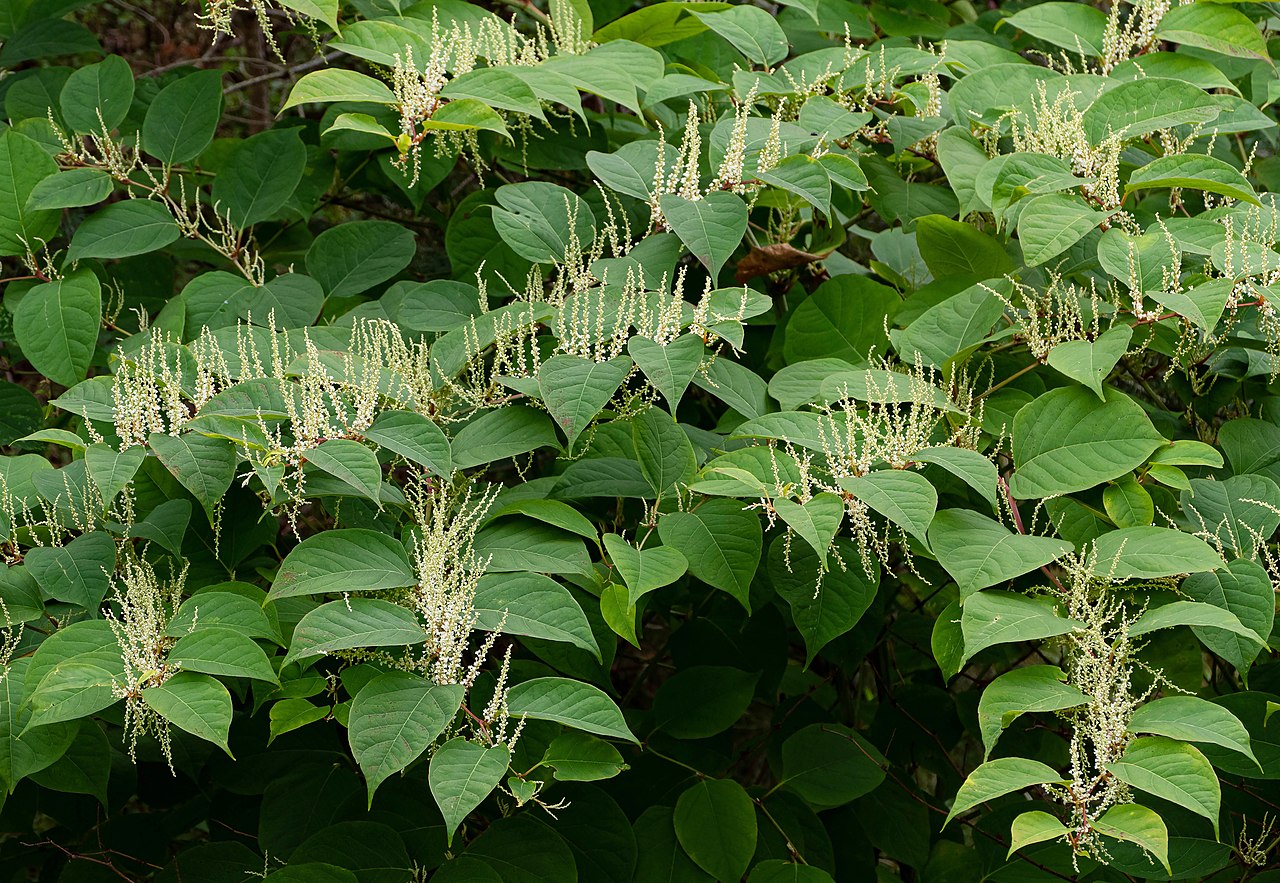
Japanese Knotweed (Polygonum cuspidatum) is one of the most invasive plants in the world and is not easily identified. Dogwood, lilac, ornamental bistorts, bird week, Himalayan honeysuckle, and Russian vines have all been mistaken as Japanese knotweed.
Young leaves are green with dark red veins. The leaves are green, shaped like a heart, and growing to twelve centimeters. The plant forms up to three-meter tall thickets.
The stems are similar to bamboo with purple specks and rings. The leaves are from the stem nodes, alternating in a zigzag pattern. The mature healthy stems are hollow. it colonizes riparian ecosystems, waste places, and roadsides.
Japanese knotweed forms thick colonies, crowding out native herbaceous species, making it one of the worst invasive exotics in the United States.
It can tolerate different soil types, salinities, and pH balances, helping it spread throughout the country with ease. Removing it is very difficult as it is resilient to cutting and will vigorously resprout from the roots.
34. Japanese Stiltgrass
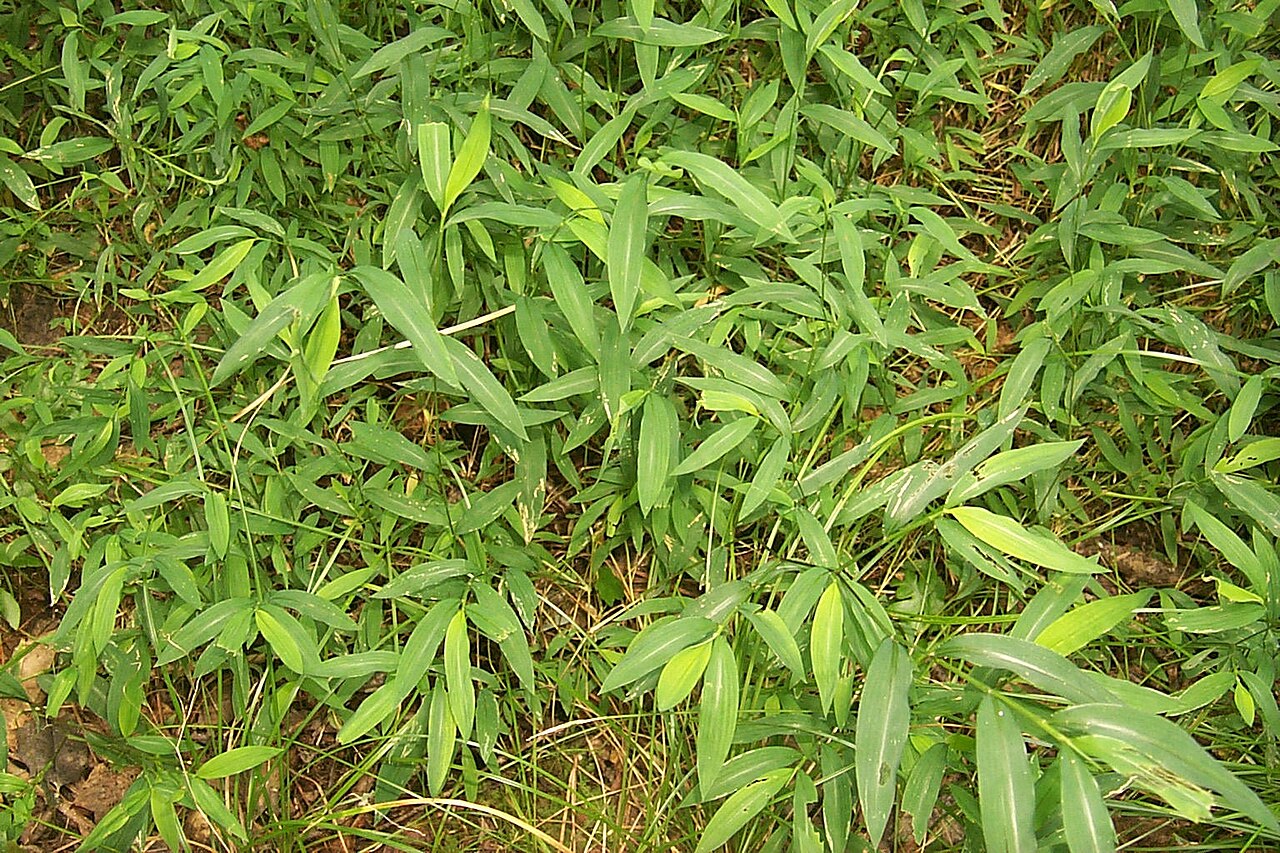
Japanese Stillgrass (Microstegium vimineum) is a native of South Asia, Southeast Asia, and East Asia. It can grow to one hundred centimeters and has roots at each node. The plant flowers late in the summer, producing seeds.
It attracts ticks and is often transported with the help of deer. It was accidentally introduced into the United States in the early 1900s and used as a packing material to transport porcelain from China. It is now in twenty-six states.
Japanese still grass invades floodplains, disturbed areas, and roads. It reduces the growth and flowering of native species, suppressing native plant communities and suppressing insect communities.
35. Japanese Virgin’s Bower

Japanese Virgin’s Bower (Clematis terniflora) is a woody, perennial vine that is highly invasive. It is native to Central and South China, along with Japan, and can quickly reach up to thirty feet in height and width.
This beautiful plant is a vigorous grower if it receives full or partial sun and requires ongoing maintenance to control it. It relies on self-seeding to spread with runners escaping cultivation and invading forest edges, stream edges, and along roads. It is a weedy and poisonous species.
36. Kudzu

Kudzu (Pueraria montana) originated in Asia, Australasia, and the Pacific. It was introduced to the United States in 1876 from Japan as an ornamental plant. It was planted throughout the southeastern United States in the 1900s as a forage crop.
Southern farmers were paid to plant kudzu, reducing soil erosion on deforested lands. This resulted in more than one million acres of this plant being planted. It was recognized as a pest weed in the 1950s.
This pest weed can grow in a range of conditions and soil types. It does prefer open and sunny habitats. It has vigorous growth with large leaves, which shade native plants. It can kill trees through girdling and extra weight from the vines. Its rapid growth enables it to grow more than sixty feet each season, approximately one foot per day.
37. Lesser Celandine

Lesser Celandine (Ficaria verna) is also known as pilewort. A low-growing, hairless flowering plant that belongs to the buttercup family. It is native to Western Asia and Europe. It has dark green, fleshy, heart-shaped leaves with distinctive flowers with glossy, yellow petals.
In New York, it is known as the fig buttercup and is an invasive species. It is poisonous if ingested and can be fatal to grazing animals, including sheep, cattle, and horses. It has been banned and is listed as a noxious weed.
This plant prefers bare, damp ground, though horticulturists and nursery owners collect selected cultivars of the plant in the United Kingdom. It emerges in late winter and the flowers appear in February.
It poses a threat to native wildflowers. It emerges before the native species, giving it the advantage to establish itself and dominate natural areas quickly. It forms extensive mats in forested floodplains and is often seen in upland sites as well.
38. Mile-a-minute Weed

Mile-a-minute Weed (Persicaria perfoliata) originates from Eastern Asia, Japan, the Philippines, and India. It is also known as the Devil’s-tail tearthumb and was introduced experimentally to Portland in 1890 and Maryland in 1937. It was unintentionally introduced in the 1930s to a nursery in York County.
In the past ninety years, the plant has expanded more than three hundred miles from York county. The plant invades open and disturbed areas from forest edges and wetlands, to roadsides, fields, and stream banks.
Mile-a-minute lives up to its name and grows quickly. It produces a tangle of vines over woody and herbaceous plants. It also makes its way into trees. The thick tangles block sunlight killing any covered plants.
The pale green leaves alternate on the stem with flowers and fruits emerging from the ocrea. The small flowers are white and the fruits are berry-like. Each fruit has glossy black hard seeds.
39. Common Mugwort

Common Mugwort (Artemisia vulgaris) is a flowering plant and one of the invasive species found in New York. It is also sometimes referred to as riverside wormwood. It originates in Europe and Asia and has naturalized in North America.
It is a common plant found in waste spaces, uncultivated areas, and on roadsides. This tall herbaceous plant can grow two meters in height. It spreads through vegetative expansion. The leaves can be up to twenty centimeters. The leaves are dark green and dense with white hairs on the underside.
The grooved stems are erect with a red-purple coloration.
40. Multiflora Rose

The Multiflora Rose (Rosa multiflora), also known as the baby rose or Japanese rose is native to eastern Asia. It was introduced to North America and is an invasive species. This scrambling shrub can climb over other plants, growing heights of five meters.
It has stout stems with prickles and large ten-centimeter-long leaves. The flowers are small and can be white or pink.
41. Norway Maple
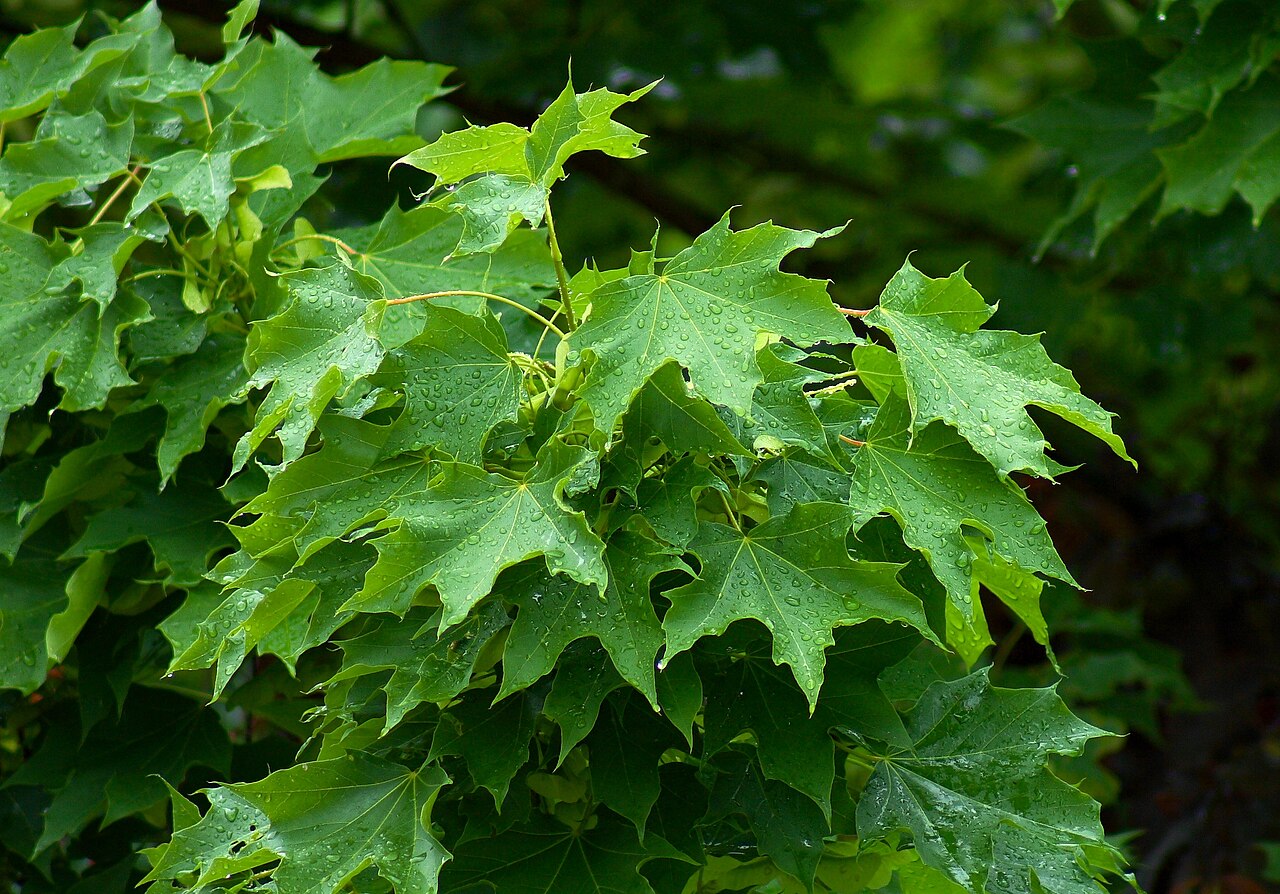
The Norway Maple (Acer platanoides) is native to central Europe and western Asia. It was introduced in the mid-1700s to North America as a shade tree. They can grow to thirty meters in height with a thick trunk of around 1.5 meters. The gray-brown bark is grooved.
They produce green shoots that turn pale brown. The leaves have five lobes, each bearing side teeth. The leaves secrete a milky juice if you break them. They turn yellow or orange-red in the fall.
There are usually up to thirty flowers clustered together. The flowers are yellow or yellow-green with five small petals. Flowering occurs in the early spring. The fruit has winged seeds, which are disc-shaped. They produce a large number of seeds.
They have shallow roots and out-compete other plants when it comes to nutrient uptake. They cause expense to municipalities and homeowners when the branches break in storms, as the wood is not strong.
42. European Swallow-Wort

The European Swallow-wort (Vincetoxicum rossicum) is a herbaceous, perennial vine that is twining. The vines can grow to five feet in length. The leaves are oval, dark green, and shiny. Flowering occurs from June to September and is dark pink or dark red. The star-shaped flowers are in clusters.
The slender fruits are similar to milkweed pods and have small seeds with white hairs. These hairs allow the seeds to disperse with ease on a windy day. This plant invades upland areas, tolerating a range of conditions.
They grow rapidly over native vegetation, dominating woodlands. The seeds are dispersed long distances in the wind. The plant resprouts vigorously if cut, making it very difficult to control.
43. Wild Parsnip

Wild Parsnip (Pastinaca sativa) is a perennial herb that looks and smells similar to parsnip that has been cultivated. The plant grows to four feet in height. The leaves alternate and are branched with jagged teeth.
This plant produces flowers from May to June. The flowers are yellow. The fruit is smooth and dry, slightly winged. The fruits contain two seeds that disperse in the fall.
This plant is native to Eurasia and occurs in sunny areas with various soil conditions. When you come into contact with the plant it can cause the skin to become photosensitive to sunlight, causing blisters.
44. Wineberry
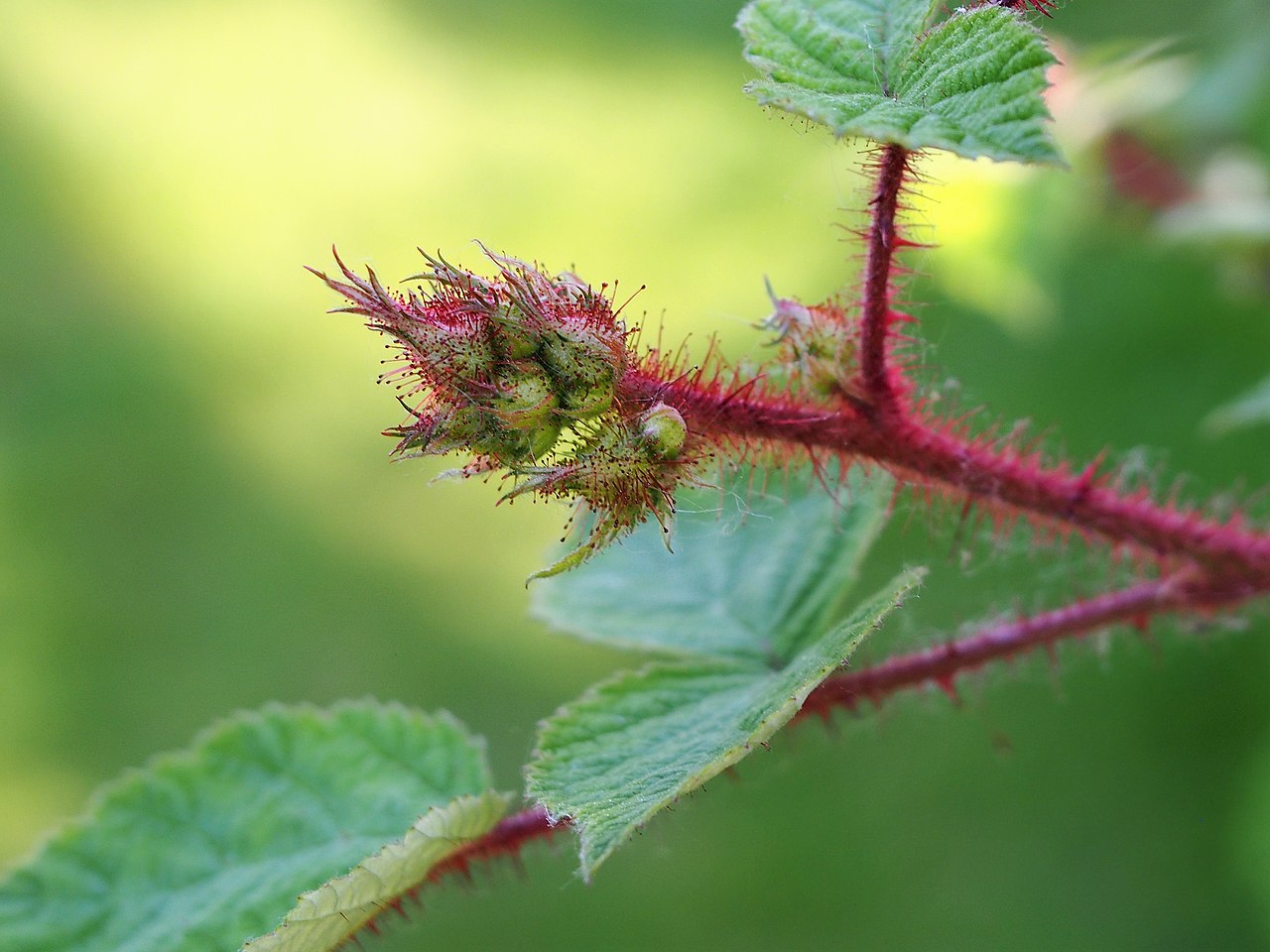
The Wineberry (Rubus phoenicolasius) is an invasive shrub, belonging to the same family as raspberries and blackberries. It creates spiny thickets, which are impenetrable, reducing the value of the area as a wildlife habitat. It was introduced in the 1890s and had been found invading areas by 1970.
The plant replaces native vegetation. It has red on the stems and silver under the leaf. It produces bright red berries. The long shoots can be up to six feet in length. They can re-root at the tip the minute they touch the ground.
They are tolerant of all lighting conditions and soil types. It is a very hardy plant. It is found in most habitats in New York, including forested habitats. The seeds are dispersed by animals. The seeds can also germinate when they fall on the forest floor.
45. Common Reed

The Common Reed (Phragmites australis) is a plant species that is distributed in wetland grass, growing up to twenty feet in height. It commonly forms stands, known as reed beds. The reed beds can be up to one square kilometer or more. It can spread by up to five meters per year in favorable conditions.
In standing water, it will put down roots, standing up to one meter in the water, acting as a floating mat. Leaves are around sixty centimeters long. It produces dark purple flowers in summer.
It was introduced to North America in the 1800s. It out-competes native vegetation, lowering local plant biodiversity. It forms thickets that are unsuitable for native fauna. It causes problems for wetland plants. It is very difficult to control with deep growing roots that are strong.
46. Eurasian Watermilfoil

The Eurasian Watermilfoil (Myriophyllum spicatum) is a spiked plant, native to Europe, Asia, and North Africa. It is a submerged aquatic plant that grows in slow-moving or still waters. It is highly invasive.
The plant has slender stems and grows up to two hundred and fifty centimeters in length. The leaves are submerged and grow to around thirty-five millimeters. It produces flowers at the leaf axils, which are on a fifteen-centimeter spike. The spike is held above the water’s surface.
The flowers are orange-red. It was first introduced in the 1940s and has become an invasive species.
47. Hydrilla
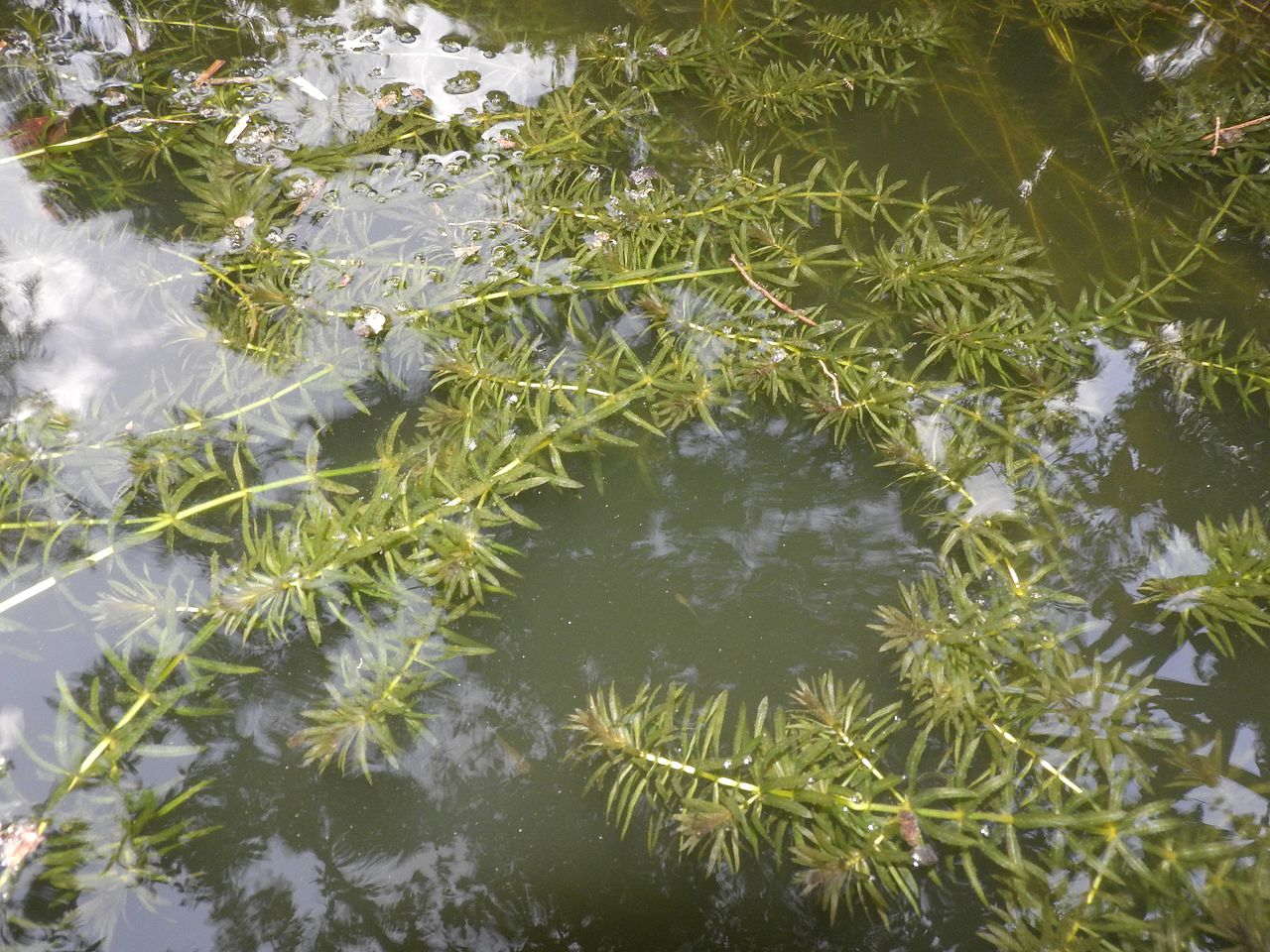
Hydrilla (Hydrilla verticillata) is an aquatic plant, It is native to Asia, Africa, and Australia. The two-meter stems have leaves arranged in whorls of eight around the stem. The leaves are 20 millimeters in length with small pines on the margins.
The male and female flowers are produced separately on one plant. The flowers are small with three petals. The flowers are transparent with red streaks. It is resilient to salinity, giving it the upper hand when compared to other freshwater aquatic plants.
This plant population has caused environmental, ecological, and economic damage. It is very aggressive and competitive, out-competing and displacing native plants.
48. Purple Loosestrife

Purple Loosestrife (Lythrum salicaria) can grow up to two meters in height. It forms colonies, which are more than 1.5 meters in width. They have erect stems that grow from a woody root. The red-purple stems have ten-centimeter leaves, arranged opposite or in groups of three.
The plant produces a purple-red flower with six petals. They cluster lightly in the axis of the leaves. It also produces a tiny fruit, shaped like a capsule. The tiny fruit has many tiny seeds.
49. Didymo

Didymo (Didymosphenia geminata) is a single-celled organism that is unique in its silica cell walls. They can move on surfaces.
The stalk attaches to rocks, submerged surfaces, and other plants. When it divides, the stalk also divides, forming several branching stalks.
It is now considered that it may be native to New York. It was found in New York state in 2007 in the Hudson River tributary.
50. Water Chestnut

The Water Chestnut (Trapa natans) is also known as the buffalo nut. It is a floating aquatic plant, that grows in slow-moving freshwater. It is native to Africa and Eurasia. The plant has ornately shaped fruits, each containing one large, starchy seed.
The submerged stem can reach up to 4.6 meters in length and is anchored to the mud with fine roots. They have two leaf types, which are finely divided and feather-like. There are leaves on the submerged stem and those floating on the surface.
This plant can spread by the fruits and rosettes that detach from the stem and float to another area using the water currents. It was introduced to North America in 1874 by the Harvard University Botanical Garden. The seeds were thrown into the fresh pond and Cambridge waterways.
It is now declared an invasive species and a noxious weed.
51. Yellow Iris

The Yellow Iris (Iris pseudacorus) is a flowering perennial plant that can grow to 150 centimeters in length. It has erect leaves and bright yellow flowers. It produces a dry capsule fruit with pale brown seeds.
This plant loves wet conditions and is commonly seen in wetlands. It spreads quickly both on land and in the water. It can also survive for long periods out of the water. The entire plant is toxic to animals.
It escaped from cultivation in North America and established itself as an invasive plant, creating dense stands, and out-competing native plants. It is very difficult to remove.